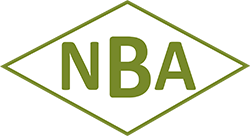Bluetongue
19th September 2007
Category: Health Fact Sheets
Bluetongue is an insect-borne viral disease to which all species of ruminants are susceptible, although sheep are most severely affected. However, cattle are the main mammalian reservoir of the virus and are very important in the epidemiology of the disease. It is characterised by changes to the mucous linings of the mouth and nose and the coronary band of the foot. Bluetongue is present when it is confirmed by laboratory tests that the Bluetongue virus (BTV) is circulating in an area.
Bluetongue does not affect humans.
Since 1999 there have been widespread outbreaks of Bluetongue in Greece, Italy, Corsica (France) and the Balearic Islands (Spain). Cases also occurred in Europe in Bulgaria, Croatia, Macedonia, Kosovo and Yugoslavia. Serotypes 2, 4, 9 and 16 have been involved. These cases have been well north and west of its normal distribution. It appears that the virus has spread from both Turkey and North Africa.
Cause
Bluetongue is caused by a virus within the Orbivirus genus of the family Reorvirades. At present 24 distinct serotypes have been identified as a result of serum neutralisation tests.
The virus is transmitted by a small number of species of biting midges of the genus Culicoides. Bluetongue virus cannot naturally be transmitted directly between animals. Virus transmission between animals occurs via the insect vector; some species of midges. However, the likelihood of mechanical transmission of the virus between herds/flocks and within a herd/flock by unhygienic practices (e.g. use of contaminated surgical equipment or hypodermic needles) cannot be excluded.
When a midge bites an infected animal, the virus passes to the midge in the blood meal and the virus multiples in the midge. The cycle of replication of the virus in the insect vector and in the ruminant host, results in amplification of the amount of BTV available to uninfected naive hosts and vectors.
Peak populations of vector Culicoides occur in the late summer and autumn and therefore this is the time when Bluetongue is most commonly seen.
Clinical signs
Clinical signs can vary by species - although symptoms are generally more severe in sheep, cattle can occasionally show signs of disease. Cattle are important in epidemiology of the bluetongue as they act as an often silent source of BTV – a reservoir for disease and keep the infection circulating. It is important to be vigilant, especially in the case of sheep. If you suspect any signs of the disease you must report this immediately to your local Animal Health Office.
Clinical signs in cattle:
It is possible that cattle will show no signs of illness, however clinical signs have included:
Nasal discharge
Swelling of the head and neck
Conjunctivitis (runny eyes)
Swelling in, and ulceration, of the mouth
Swollen teats
Tiredness
Saliva drooling out of the mouth
In cattle, the disease cannot be diagnosed on clinical grounds and requires laboratory testing for confirmation.
The disease can only be confirmed by laboratory tests.
Latest situation
Bluetongue detected in Suffolk
The strain of Bluetongue virus detected in one cow near Ipswich, Suffolk has been identified as Serotype 8. This is the strain found in Belgium, France Germany, Luxembourg and Netherlands since August 2006.
This is not a confirmed outbreak unless further investigation demonstrates that disease is circulating, and this could take days or weeks to assess. The premises where Bluetongue was detected remains under restrictions, and epidemiological investigations are being carried out to assess the situation.
Debby Reynolds, Chief Veterinary Officer, said:
“It remains vitally important that farmers maintain vigilance for this disease and report any suspect cases, particularly as clinical signs may be similar to Foot and Mouth disease. I would like to thank the owner, Animal Health and the Institute for Animal Health for their rapid response in helping to detect Bluetongue in this single animal.”
The premises where Bluetongue has been found is under restrictions.
This is the first time Bluetongue virus has been recorded in the UK.
The Industry working group is comprised of senior individuals from the following organisations:
British Cattle Veterinary Society
British Meat Processors Association
National Beef Association
National Farmers Union
National Sheep Association
Livestock Auctioneers Association
Sheep Veterinary Society

